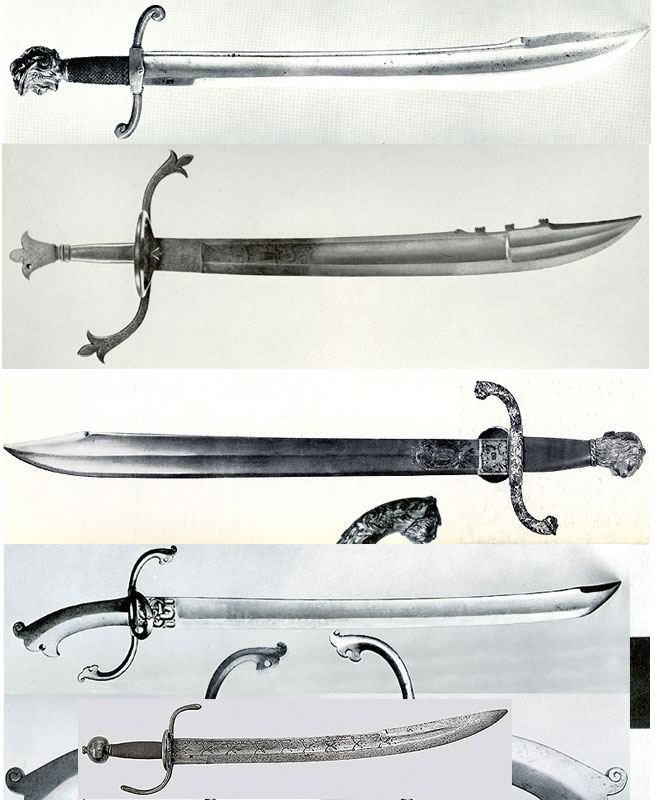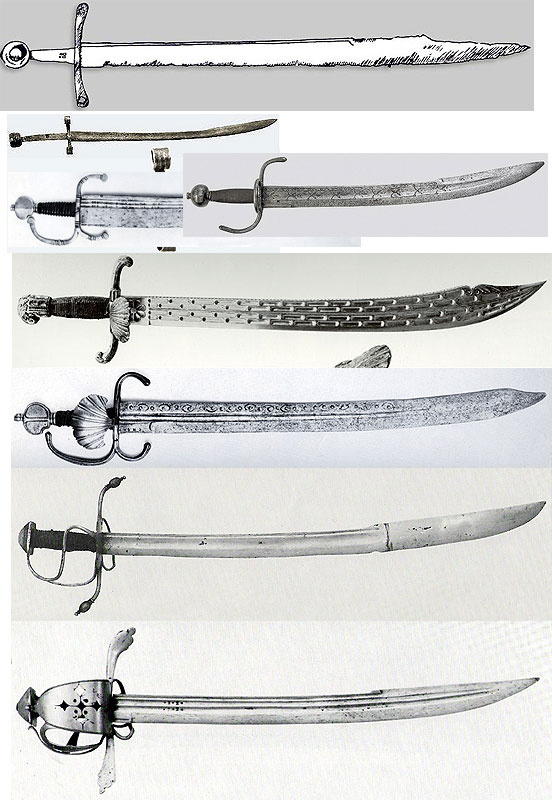Posts: 164
Fri 01 Jul, 2005 11:28 am
| Quote: |
| Another note on the painting.... The pommel appears to be canted downward from the blade, to me. Not centered in line with the blade. |
I was crawling through my latest book acquisition, 'Swords And Spears / Schwert Und Spiess' by P. Krenn, which is a survey of Swords and Polearms from the Landeszeughaus in Graz, and found some interesting pieces in there, that may shed some light or intimate some influences on the sword in the Painting. It is written in German with a very poor translation in English alongside every piece of text.
Since Styria (the "Nation" Graz was in) was closely influenced by the Hungarian weapons and designs, many of their pieces fall into distinctly "Hungarian/Croatian" and "German" groupings. In the late 16th Century, the Armoury started collecting more and more Hungarian designs, which were being produced in Styria, Passau, and Solingen.
One distiction that was made in describing Hungarian Hilts, is they are primarily U shaped quillons pointing to the Tip, or severely "S" shaped hilts (by severe, I mean more like a 5 as it appears on a Digital Readout, right angles instead of sweeping curves), with one arm forming a knuckle bow, and the other parallel to the blade.
These hilt forms appear on their Estocs, Sabers and Dussagen throughout the Late 16th-Early 17th centuries. The Weapons described as "Hungarian Sabers" and "Dussagen" are almost identical to the Falchion illustrated, with the major difference being the severity of the Clipped Tip. The Dussagen have a much less severe clip. It is also interesting to note they attribute the word "Dussagen" to the Czech word for "Long Knife" (Gross Messer in German), and describe them as Infantry Sabers appearing in the 16th century, primarily among the Styrians.
All of the the Dussagen and Hungarian Sabers are single edged, but all of them feature a distinct double edge at the clip, which comprise about the front 1/4 of the blade.
Also, almost all of the "Hungarian" weapons (i.e. not the Dussagen) have the pommel canted towards the tip.
Lastly, they state that the majority of their late 16th century weapons, regardless of Hungarian or German design, were primarily manufactured in Southern Germany.
So, it could be that the Italian Falchion was influenced by the Styrian Arms, and that the Hungarian Hilts and Blades being produced in Southern Germany migrated to Italy in their influence.
Just curious, where and when was this Painting made (I hadn't seen a reference to that in these threads).
Matthew

